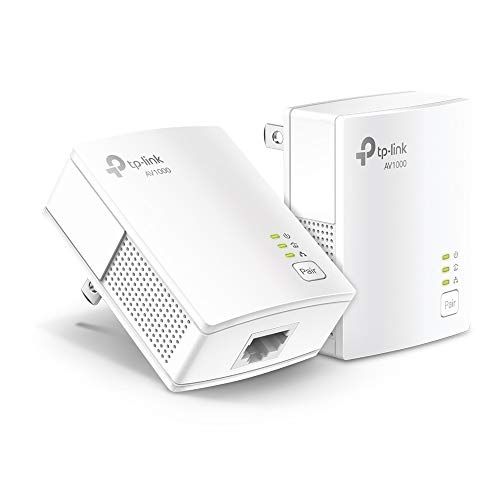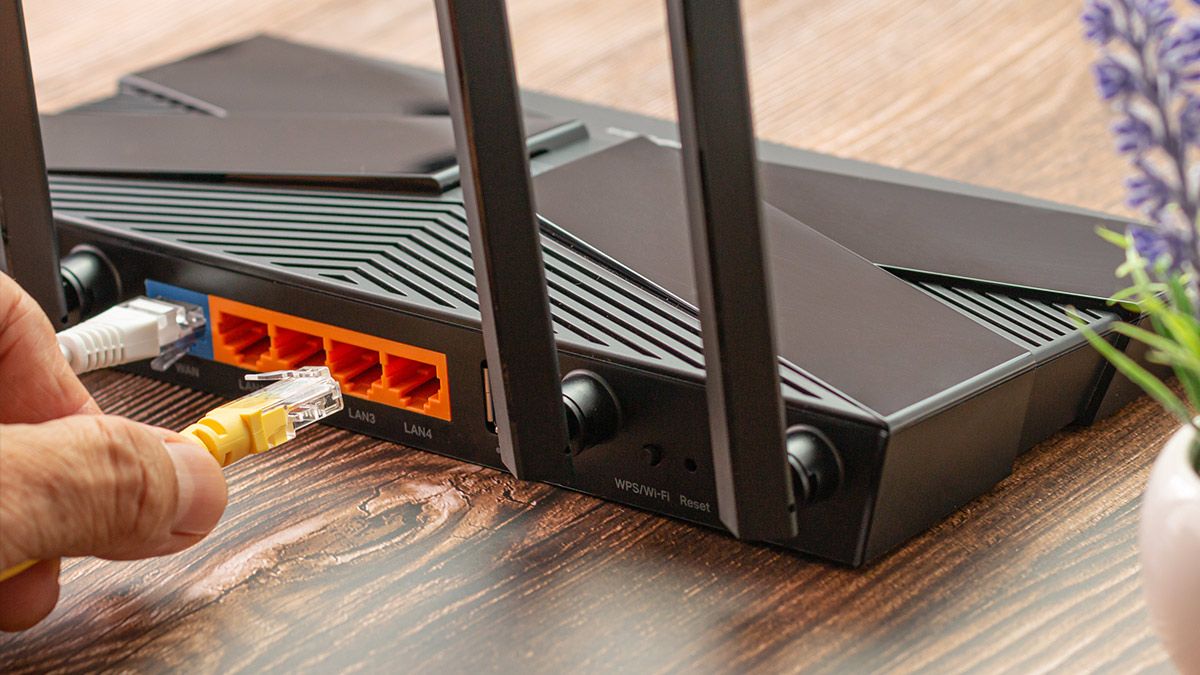Quick Links
Wi-Fi is ubiquitous at this point but that doesn't mean you should default to using it exclusively. Here's why you should skip using Wi-Fi in favor of Ethernet where you can.
Wi-Fi Is a Compromise
First off, lest you think we're crusading against Wi-Fi, let us assure you that we think Wi-Fi is pretty great. Breaking free from physically tethered networks makes it possible to do all sorts of useful and fun things.
From backyard laptop use to wireless security cameras and, of course, goofing around on your smartphone with high-speed internet, it's all possible over every inch of your home thanks to Wi-Fi. That's amazing. A blazing fast modern router paired with a new smartphone really is a "the future is now" kind of moment.
But, Wi-Fi is ultimately a compromise. It's a compromise based on accepting that we have to give up some performance to not be physically tied to the wall by a cable. To use a real-world example that predates Wi-Fi by a long shot, broadcast radio is exactly the same kind of compromise.
Radio allows you to listen to music anywhere. But you won't get the same fidelity you get from listening to an album at home with hardwired speakers. Same thing with streaming services. The bitrate of a Netflix stream is a fraction of the bitrate you get from a Blu-ray player fed into your TV over an HDMI cable.
Like those things, when we use Wi-Fi we make tradeoffs. Wi-Fi isn't as fast as Ethernet. It has higher latency. Too many devices connected to a Wi-Fi create congestion and connectivity issues.
And that's OK. We make those compromises because it's convenient. If we could only use network-connected devices like tablets and smartphones where we could plug them in, things would look a whole lot different than they do now. But we shouldn't compromise where we don't have to---and that's where Ethernet comes in.
Ethernet Is Great (But Often Overlooked)
If you're a computer geek of a certain age, you can remember a time when Ethernet was it, as far as network connectivity was concerned. There was no Wi-Fi and if you wanted one computer to communicate with another computer in your home or office you needed a physical cable connecting the two of them.
The arrival of Wi-Fi in the late 1990s and the increasing adoption throughout the 2000s, however, eventually religated Ethernet---as far as the average household was concerned at least---to the annals of history.
As a result, there are lots of people who simply don't think about Ethernet at all. They default to adding things to their Wi-Fi network and never even consider using an Ethernet cable.
For example, a neighbor asked me for help with a smart TV issue they were having. The problem? The TV just wouldn't maintain a stable connection, and streaming media connections would frequently drop leaving them staring at the message "Netflix has encountered an error."
When I popped over to help them I noticed their cable modem/Wi-Fi router combo unit was right there under the TV in the entertainment center. I grabbed a short spare Ethernet cable from my workshop, hooked the TV directly to the router, and their streaming experience went from working some of the time to working perfectly all of the time.
The biggest takeaway from that particular experience wasn't that Ethernet saved the day (which was an outcome I expected) but that my neighbor simply hadn't considered there was anyway but Wi-Fi to connect their TV to the internet. And that's a shame because when you have the opportunity to use Ethernet, it's a huge upgrade over Wi-Fi.
I'm writing this article while working on a PC connected to my home network by Ethernet cable. Thanks to Ethernet I have exactly the same latency and bandwidth that I would have right at the modem---but I'm enjoying it at a workstation that's all the way across the house and two stories removed from where the fiber connection enters my home in the basement.
There are a host of advantages to using Ethernet over Wi-Fi in the home, including:
- Ultra-low Latency: Wi-Fi will never be as responsive as an electrical impulse sent down a wire. Whether you're gaming on a PC or a console, low latency is ideal.
- Speed: Even the best Wi-Fi routers still don't hit their maximum theoretical speeds, but it's easy to max out an Ethernet connection.
- Stability: Barring damage to the cable or hardware, Ethernet connections are rock solid.
- No Authentication: You don't need credentials for Ethernet. Just plug the device into the network and go.
Finally, here's an advantage that isn't inherent to Ethernet but is an advantage when you're using Ethernet and Wi-Fi in a mixed environment. Taking the high-demand devices off the Wi-Fi network (like your PC or smart TV) and putting them on Ethernet works wonders for lightening the load on your Wi-Fi router. Maybe you don't need a new Wi-Fi router after all---maybe you just need to put the most demanding items on Ethernet.
Considering how cheap Ethernet cable is, if you have the ability to connect a device with it then there is little reason not to do so.
Devices You Should Connect to Ethernet
If, like our neighbor, you simply hadn't considered using both Ethernet and Wi-Fi for your home network, you might want some suggestions on where to start.
Many homes---both apartments and houses alike---have the internet entering the home in the living room because that's where various telecommunication points, like the cable connection, enter the home.
If you're in that situation and your network gear is right there with your TV, then you have an obvious first stop. Grab a pack of Ethernet patch cables and connect everything in your media center that supports it.
To use my media center as an example, that would include the smart TV, game consoles like the Xbox, PlayStation and Nintendo Switch, and streaming boxes like the Apple TV and Roku. Check for Ethernet ports on everything under your TV. No Ethernet port on your smart TV? Here's how to add one. If you need more ports unmanaged network switches are inexpensive.
There's a similar situation with home offices. If you have a bunch of gear in the same room as the modem and router, such as your PC, a network laser printed, or any other office gear with an Ethernet port, don't use the Wi-Fi---plug it in.

TP-Link AV1000 Powerline Ethernet Starter Kit
Home not wired for Ethernet? That's no problem with a Powerline Ethernet kit.
Even if your home isn't wired for Ethernet you can still work around that and take advantage of wired speeds. You can run a long Ethernet cable from one room to another or even use powerline Ethernet to route data signals over your home's electrical wires.
Powerline Ethernet has improved greatly over the years. You can link your basement router to your bedroom gaming setup with gigabit speeds for under $50. It's not exactly having your whole house wired with Cat6, but you won't have to fish any cables or patch any drywall.
However you go about it, though, switching over devices will not only take a burden off your Wi-Fi system but improve that device's connection to the local network and internet too.

